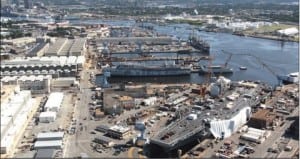
The Navy is planning to begin a “scoping study” within a year to determine if the service needs to set up a fifth public shipyard to help maintain submarines in the future, an official said this week. During the annual Naval Submarine League symposium, Rear Adm. Jonathan Rucker, program executive officer for attack submarines (PEO SSN), told reporters the Navy is often asked about the possibility of the service executing a fifth public shipyard. “The question in our current capability,…

 By
By 











